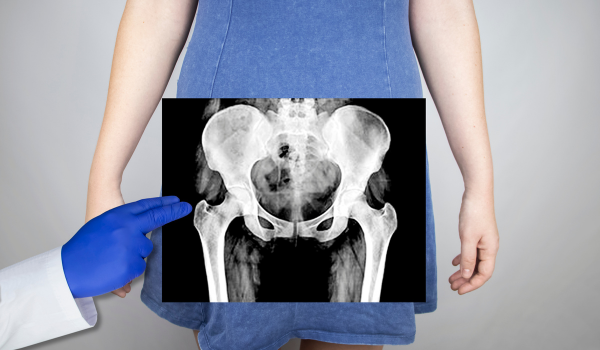.png)
Why Risk Assessment Matters
May-Thurner Syndrome (MTS) is a vascular condition where the right iliac artery compresses the left iliac vein, restricting blood flow from the left leg and increasing the risk of deep vein thrombosis (DVT). While the anatomical variation responsible for MTS exists in many people, only a subset develops symptoms or complications. Identifying who is most at risk is critical for early diagnosis, targeted prevention, and timely treatment.
Understanding the high-risk groups helps physicians screen more effectively and empowers individuals to take control of their vascular health before serious complications arise.
Young to Middle-Aged Women
One of the most prominent risk groups for MTS includes women between the ages of 20 and 50. Several factors contribute to this:
-
Hormonal influences from estrogen, which affects vein wall elasticity
-
Use of birth control pills or hormone replacement therapy
-
Pregnancy-related changes in blood volume and pelvic pressure
Women in this demographic often report leg pain, swelling, or cramping—especially in the left leg—that may be misattributed to lifestyle or menstrual cycles. Yet, these symptoms could be the first signs of MTS.
Pregnant Women
Pregnancy is a unique risk factor for May-Thurner Syndrome, particularly in the second and third trimesters when the growing uterus adds pressure on the pelvic veins.
Contributing factors include:
-
Elevated blood volume (up to 50% increase)
-
Venous dilation due to progesterone
-
Mechanical compression of the iliac vein from the uterus
These physiological changes can trigger or worsen MTS symptoms, including swelling, heaviness, and even DVT. Pregnant women experiencing persistent left leg swelling should be evaluated for vascular causes, including MTS.
Postpartum Women
After childbirth, the body takes time to normalize its vascular state. However, the risk of clotting remains elevated for several weeks postpartum.
Women who have:
-
Undergone cesarean section
-
Experienced complicated deliveries
-
Remained sedentary during recovery
...are particularly vulnerable. Postpartum leg swelling, especially in the left leg, should not be ignored and warrants investigation into May-Thurner Syndrome as a possible underlying cause.
Individuals with DVT History
People who have had a deep vein thrombosis—especially if it was on the left side and unprovoked—are prime candidates for further MTS evaluation.
Signs suggesting MTS as the underlying cause of a previous clot include:
-
Recurrence of DVT despite anticoagulant therapy
-
Residual leg swelling and pain post-treatment
-
DVT in young patients with no known risk factors
In many cases, an initial clot may have been the result of chronic venous compression from May-Thurner Syndrome that went undiagnosed.
People with Unilateral Leg Symptoms
Any individual—regardless of age or sex—who presents with unexplained, one-sided leg symptoms may be at risk. These include:
-
Left leg swelling
-
Cramping or heaviness
-
Visible varicose veins isolated to one side
-
Skin discoloration or texture changes
Since MTS typically affects only the left iliac vein, these one-sided symptoms are a strong diagnostic clue and should prompt vascular imaging.
Young Athletes and Active Individuals
Physically active individuals, particularly those engaged in endurance sports like running or cycling, may develop symptoms due to increased blood flow demands and prolonged pressure in the pelvic region.
Though rare, cases have been documented where:
-
Repetitive hip flexion contributed to vein trauma
-
Muscle hypertrophy compressed pelvic veins
-
Dehydration increased blood viscosity, compounding risks
Athletes with unexplained leg discomfort or swelling should consider MTS as part of their differential diagnosis.
People with Clotting Disorders
Those with genetic or acquired thrombophilia have an increased risk of developing complications from May-Thurner Syndrome, even if the vein compression is mild.
Clotting disorders that heighten MTS risk include:
-
Factor V Leiden mutation
-
Prothrombin gene mutation
-
Antiphospholipid syndrome
-
Protein C or S deficiency
In these individuals, even minor circulatory disruption can lead to life-threatening clots. If they present with left-sided DVT, MTS evaluation is often warranted.
Sedentary Workers
Occupational habits can influence the development of symptomatic MTS. People who spend extended hours sitting—such as drivers, office workers, and airline pilots—may develop vein compression from prolonged hip flexion and reduced circulation.
Key signs in these individuals include:
-
Symptoms that worsen during or after long periods of sitting
-
Leg fatigue or numbness while working
-
Improvement with movement or leg elevation
Awareness of the link between sedentary behavior and vascular health is essential, particularly in high-risk professions.
Obese Individuals
Excess body weight increases intra-abdominal pressure, which can intensify the compression of pelvic veins. Obesity also contributes to inflammation, hormonal imbalances, and decreased mobility—all of which elevate the risk for clot formation in MTS patients.
People with high BMI should be aware of:
-
Chronic leg discomfort or swelling
-
Poor healing of leg wounds
-
Increased varicose vein development
Weight management, paired with vascular evaluation, can significantly reduce MTS-related risks in this group.
Women on Hormonal Therapy
Hormonal medications—particularly those containing estrogen—can make veins more prone to dilation and clotting. These include:
-
Oral contraceptives
-
Hormone replacement therapy
-
Fertility medications
Women using these treatments who also experience leg symptoms should be evaluated for potential underlying vascular compression, especially if they have other risk factors.
Post-Surgical Patients
Major pelvic or abdominal surgeries can increase the risk of May-Thurner complications by:
-
Triggering localized inflammation
-
Leading to blood pooling due to inactivity
-
Causing internal scarring that mimics or worsens vein compression
Patients recovering from procedures like hysterectomy, hernia repair, or spine surgery should be monitored for signs of left leg swelling or DVT.
People with Pelvic Masses
Non-vascular causes of compression in the pelvis—such as tumors, fibroids, or large ovarian cysts—can lead to a condition similar to May-Thurner Syndrome. These masses may:
-
Push the iliac vein against the spine or artery
-
Alter the normal flow of blood through the pelvis
-
Mimic symptoms of primary MTS
In such cases, imaging is essential to distinguish between anatomical vein compression and secondary mechanical obstruction.
Those with a Family History
Though not directly inherited, family history plays an indirect role in MTS risk. Relatives with:
-
History of unexplained DVTs
-
Known vein compression disorders
-
Genetic clotting conditions
...may signal an underlying predisposition. Early vascular assessment is especially important if multiple risk factors cluster within a family.
Patients with Chronic Venous Issues
People suffering from chronic venous insufficiency (CVI) or post-thrombotic syndrome may unknowingly have MTS. These conditions can develop from untreated or misdiagnosed iliac vein compression.
Symptoms to watch for include:
-
Leg ulcers or wounds that don’t heal
-
Skin thickening or darkening
-
Persistent aching, especially when standing
For such individuals, vascular imaging can uncover an overlooked MTS diagnosis.
Travelers and Flyers
Long-distance travelers are at increased risk for blood clots, and those with undiagnosed MTS face even greater danger. Air travel or road trips over four hours can:
-
Reduce circulation in the legs
-
Increase dehydration
-
Trigger clotting in already narrowed veins
Travelers with symptoms should wear compression garments and stay mobile during trips.
Elderly Adults
Although MTS is more common in younger people, older adults aren’t immune. Aging contributes to:
-
Loss of vein elasticity
-
Slower circulation
-
Higher prevalence of varicose veins and DVT
In seniors with new onset of leg swelling, the possibility of late-onset MTS or secondary compression should be considered.
When Multiple Risks Overlap
The danger of MTS grows when multiple risk factors are present. For example:
-
A pregnant woman with a genetic clotting disorder
-
A sedentary office worker using oral contraceptives
-
An obese patient with a history of pelvic surgery
Cumulative risks require comprehensive vascular evaluation and proactive prevention.
How to Get Evaluated
Anyone experiencing persistent left leg symptoms—especially with one or more risk factors—should:
-
Visit a primary care provider or vascular specialist
-
Ask for Doppler ultrasound, CT/MR venography, or intravascular ultrasound
-
Keep a symptom diary to identify activity-related patterns
Early detection leads to more treatment options and better long-term outcomes.
Preventive Measures
While not all cases of MTS are preventable, certain habits can reduce the risk of symptomatic progression:
-
Stay active and avoid prolonged sitting
-
Wear compression stockings during travel or inactivity
-
Maintain a healthy weight
-
Monitor leg symptoms and seek early evaluation
High-risk individuals may benefit from routine screening or preventive medication, especially before surgery or pregnancy.
Conclusion
May-Thurner Syndrome is more common than once thought, and it affects a wide variety of people—from young women and sedentary workers to postpartum mothers and patients with clotting disorders. Knowing the risk factors is the first step in catching the condition before serious complications like DVT develop.
By understanding who is at risk and acting early, patients can protect their vascular health and avoid the debilitating effects of delayed diagnosis.

.png)
.png)
.png)
.png)
.png)
.png)
.png)
.png)



